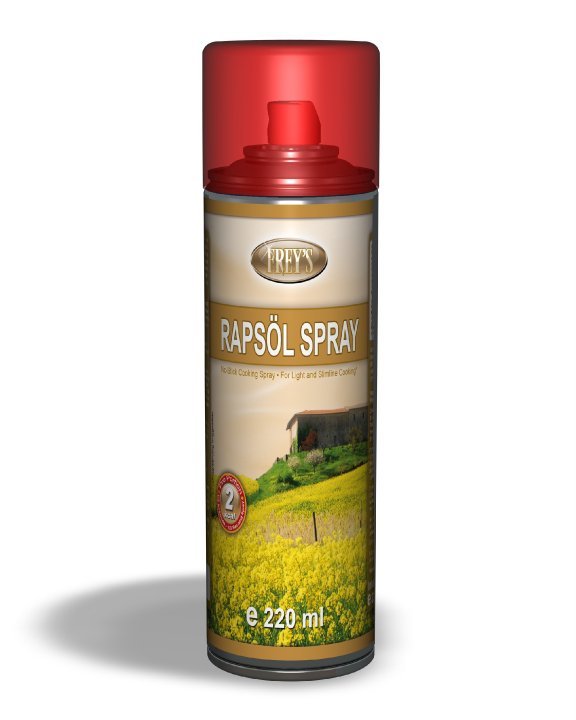No Cooking Spray
Cooking spray is a spray form of an oil as a lubricant, lecithin as an emulsifier, and a propellant such as food-grade alcohol, nitrous oxide, carbon dioxide or propane. Cooking spray is applied to frying pans and other cookware to prevent food from sticking. Traditionally, cooks used butter, shortening, or oils poured or rubbed on cookware. Most cooking sprays have less food energy per serving than an application of vegetable oil, because they are applied in a much thinner layer: US regulations allow many to be labelled "zero-calorie"; in the UK sprays claim to supply "less than 1 calorie per serving". Popular US brands include Pam and Crisco. Sprays are available with plain vegetable oil, butter and olive oil flavor.Cooking spray has other culinary uses besides cooking proper. Sticky candies such as Mike and Ike that are often sold in bulk vending machines may be sprayed with cooking spray to keep them from sticking together in the machines. Coating the inside of a measuring cup with the spray allows sticky substances such as honey to pour out more easily. Vegetables may be sprayed before seasoning to make the seasonings stick better.
he advantages of cooking spray, then, seem pretty clear. But there are drawbacks, or at least some things to bear in mind. While using cooking spray does indeed save fat and calories, it's not quite as simple as it seems. The small print says "For fat-free cooking," but that works only if you are skilled enough to limit your spray to the stated serving size of a "1/4 second spray." Elsewhere on the can, it states that a one second spray covers a 10-inch skillet, so four times the serving size.
he advantages of cooking spray, then, seem pretty clear. But there are drawbacks, or at least some things to bear in mind. While using cooking spray does indeed save fat and calories, it's not quite as simple as it seems. The small print says "For fat-free cooking," but that works only if you are skilled enough to limit your spray to the stated serving size of a "1/4 second spray." Elsewhere on the can, it states that a one second spray covers a 10-inch skillet, so four times the serving size.








No comments:
Post a Comment